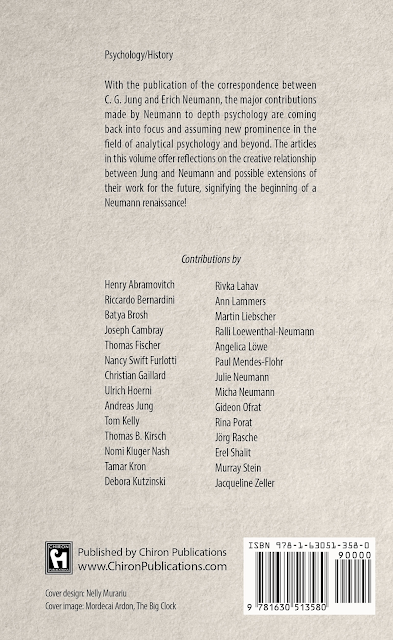Turbulent Times, Creative Minds
Edited: Erel Shalit and Murray Stein
This reviewer of Turbulent Times, Creative Minds was introduced to the work of Erich Neumann decades ago by his close friend, Gerhard Adler, who thought highly of him.
In complete contrast, Michael Fordham was critical of Neumann’s thinking on the child and told this reviewer he doubted that Neumann had ever encountered an actual child – thereby enacting an actual experience of the opposites. In addition, the profound Jung thinker, Wolfgang Giegerich, has also written critically on Neumann.
In order to experience Neumann’s thinking at first-hand, this reviewer participated in the 2015 conference held at Kibbutz Shefayim to mark the publication of the correspondence between Jung and Neumann edited by Martin Liebscher. The current skillfully edited book arising from that conference is an homage to the exceptional personal and professional relationship between Jung and Neumann, including in its pages masterly chapters by Lammers, Mendes-Flohr, Shalit and Stein.
The book ranges over such vital topics as the New Ethic linked to the eternal problem of evil (Stein’s in-depth thinking is outstanding here), the ego-self axis, sibling rivalry, the German-Jewish experience, Eranos, religion, clinical issues and art. The Jung and Neumann families’ memories and contributions add noteworthy personal touches to this highly recommended volume.
Ann Casement,
Licensed Psychoanalyst/Fellow of the Royal Anthropological Institute
This volume of essays by well-known Jungian analysts and scholars provides the most comprehensive comparison to date between the works of C.G. Jung and Erich Neumann. Reflections are based on their extensive correspondence recently published, their differing cultural backgrounds, and the turbulent times surrounding their personal and professional relationship. Among the many specific subjects discussed are Jung and Neumann on art and religion, their views on the problem of evil, and clinical aspects of Neumann’s work. Also included are personal memories of both Jung and Neumann family members.
Sections:
I. The Correspondence (1933–1960)
II. Cultural Backgrounds
III. Troubled Times
IV. The Problem of Evil
V. Neumann and Eranos (1948–1960)
VI. On the Arts
VII. Clinical Contributions
VIII. On Religion
IX. On Synchronicity
X. “Memories from My (Grand)Father’s House”
***********
Jacob and Esau
Jacob and Esau
On the Collective Symbolism of the Brother Motif (2nd printing)
by Erich Neumann
 |
| cover image by Meir Gur Arieh |
title page image by Jacob Steinhardt
|




Comments
Post a Comment